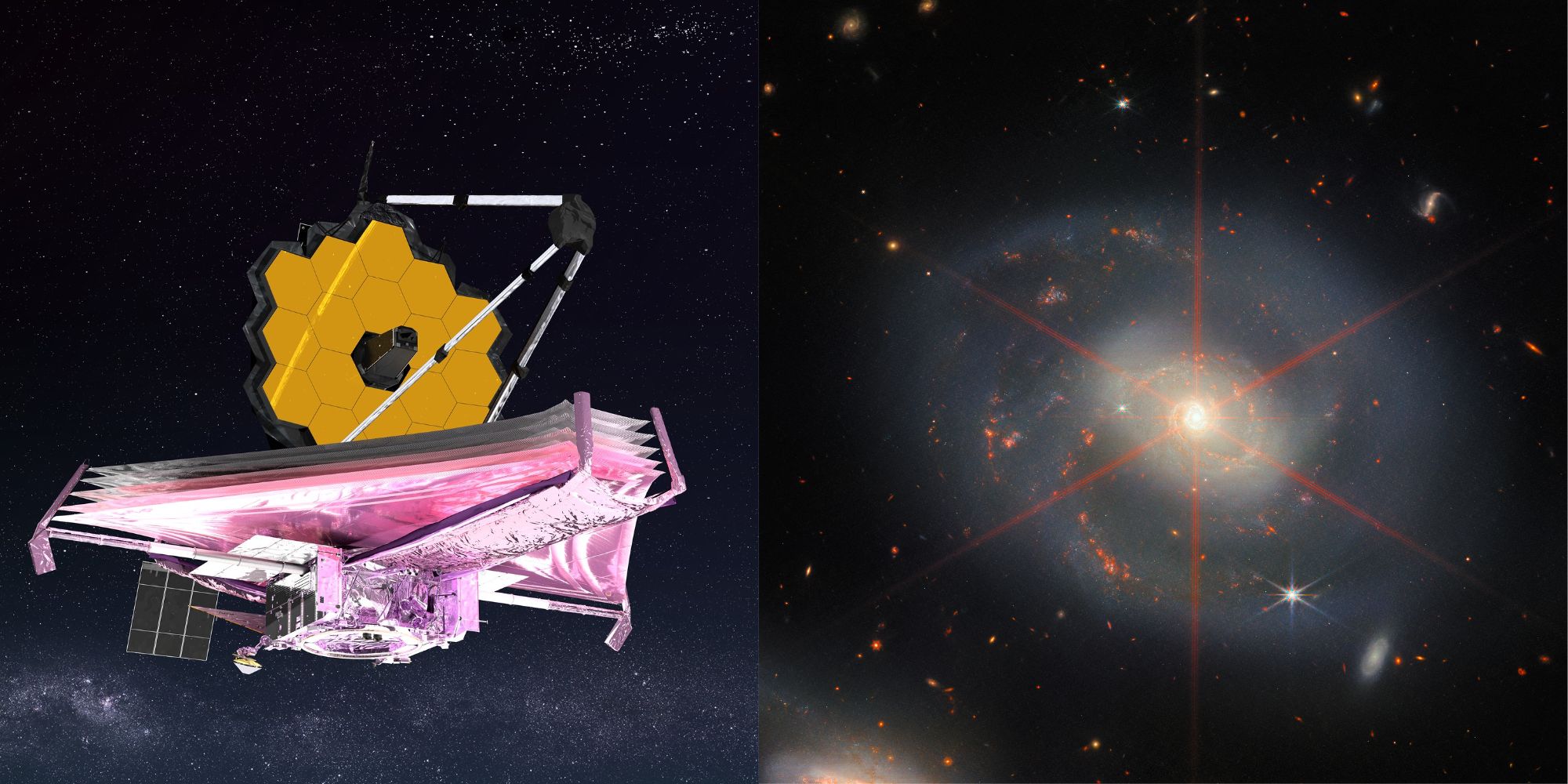Festive! Galaxy Snapped By JWST Is A Swirling ‘Wreath’ Full Of Baby Stars

The photo from JWST is a direct look at a 90,000-light-year-wide spiral galaxy called NGC 7469, which ESA describes as “a wreath of star formation.”
The European Space Agency (ESA) has shared its pick for December’s James Webb Space Telescope picture of the month, and fittingly, it’s a shot of a bright, rather festive-looking spiral galaxy 220 million light-years away. The James Webb Space Telescope (JWST) is a massive infrared telescope currently on a search for clues into the history and evolution of the universe, going all the way back to its beginning. It’s an international collaboration between ESA, NASA, the Canadian Space Agency (CSA), and others, designed to succeed the Hubble Space Telescope — and probe deeper than it ever did.
In the photo, JWST obtained a direct look at a 90,000-light-year-wide spiral galaxy called NGC 7469, which ESA describes as “a wreath of star formation.” NGC 7469 lies in the Pegasus constellation and has an ultra-bright center thanks to its active galactic nucleus (AGN), where an abundance of radiation is emitted as material falls into its black hole. This central region is haloed by a “starburst ring” composed of highly productive star-forming clusters.
James Webb Space Telescope Visits An Old Friend
NGC 7469 isn’t new to astronomers, in fact, ESA says it’s “one of the best studied AGNs in the sky,” but with JWST’s advanced capabilities, it can be examined in greater detail than ever before. JWST recently took a look at NGC 7469 as part of the Great Observatories All-sky LIRGs Survey (GOALS), leading to a slew of new discoveries — including that its nucleus may be shooting out gas at a speed of about 6.4 million kilometers (3.9 million miles) per hour.
Webb pointed its suite of instruments at NGC 7469, including its Mid-InfraRed Instrument (MIRI), Near-InfraRed Camera (NIRCam), and Near-InfraRed Spectrograph (NIRspec), allowing astronomers to spot some previously unseen young star-forming clusters and get direct confirmation of the AGN’s influence on its surroundings. “With Webb,” ESA notes, “astronomers can explore the galaxy’s starburst ring, the central AGN, and the gas and dust in between.”
As for the brilliant red beams that seem to emanate from the heart of the spiral galaxy, well, that’s no celestial object at all, just a trick of the light caused by the configuration of JWST’s mirrors and the three 25-foot struts that allowed it to unfurl in space. What we see in the latest photo — and in many others — is what’s known as a diffraction spike. In this case, it just happens to add to ESA’s holiday cheer.
Source: ESA
Share this news on your Fb,Twitter and Whatsapp
NY Press News:Latest News Headlines
NY Press News||Health||New York||USA News||Technology||World NewsTimes News Network:Latest News Headlines
Times News Network||Health||New York||USA News||Technology||World News
